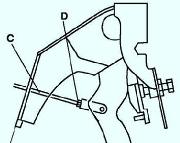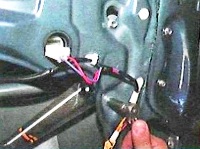Disassembly of the automatic transmission must be carried out in a place protected from dust.
When disassembling, you need to check the condition of the parts for wear and damage
Only plastic hammers should be used to separate the parts of the crankcase.
Do not use rags during disassembly: the fibers of the rags can clog the fluid channels.
Some of the parts are similar to each other, so arrange them when disassembling so as not to confuse.
If the clutch or brake band is burnt or the quality of the fluid in the box has deteriorated, then it is imperative to clean the valve block.
Before disassembling, clean the outside of the box with a cleaner or solvent.
Clean the removed parts with a solvent and dry with compressed air.
We install the gearbox on a special stand or workbench.
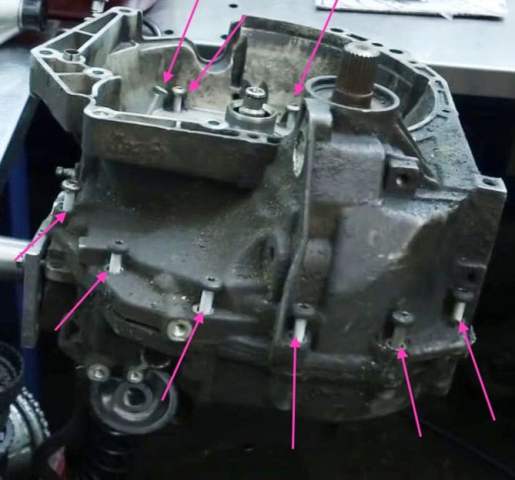
Unscrew the bolts securing the clutch housing to the box housing (Fig. 1)

Disconnect the box crankcase (Fig. 2)
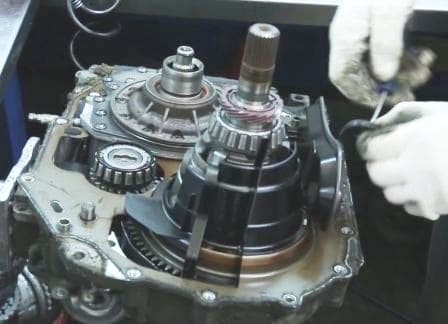
Remove the magnet from the automatic transmission filter (Fig. 3)
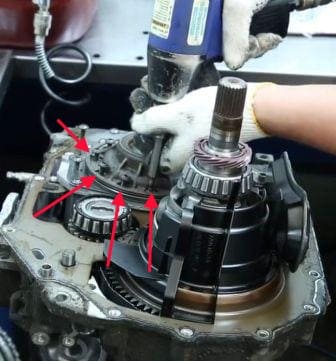
Unscrew the pump (Fig. 4)
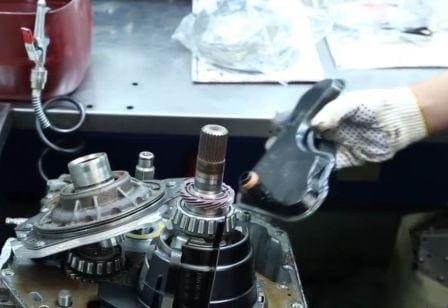
We take out the pump and separate the filter from it (Fig. 5)
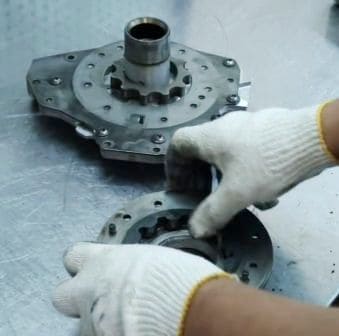
We disassemble the pump, remembering the position of the parts, and determine their wear (Fig. 6)
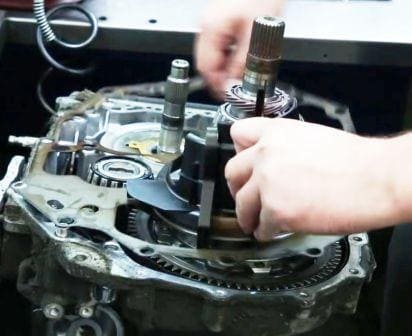
Remove the gearbox housing gasket (Fig. 7)
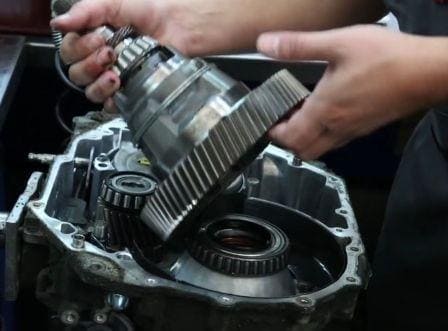
Remove the differential (Fig. 8)

Remove the parking lever (parking dog) (Fig. 9)
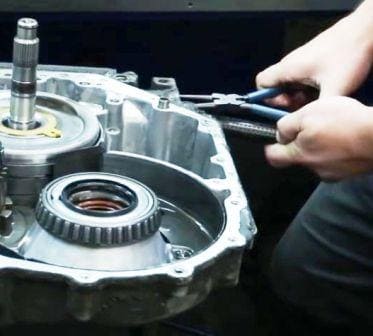
Using thin pliers, remove the band brake servo piston (Fig. 10)
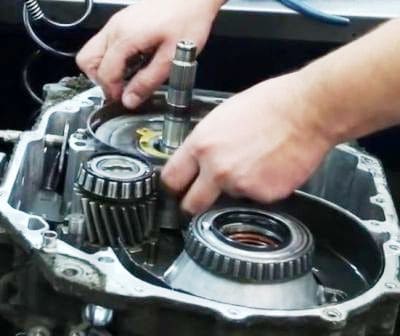
Remove the first and second gear brake band (Fig. 11)
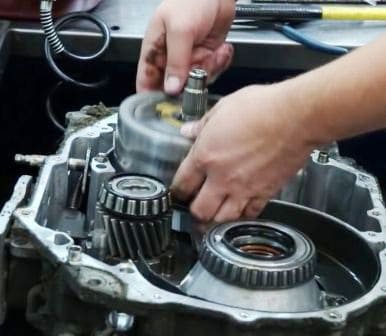
Remove the first and second gear drum (Fig. 12)
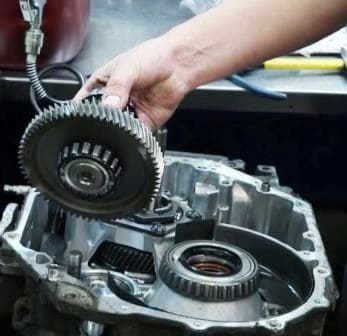
We remove the output shaft (parasitic gear) (Fig. 13)
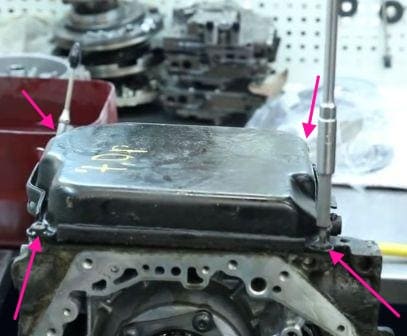
Turn the box over and unscrew the screws securing the hydraulic unit tray (Fig. 14)
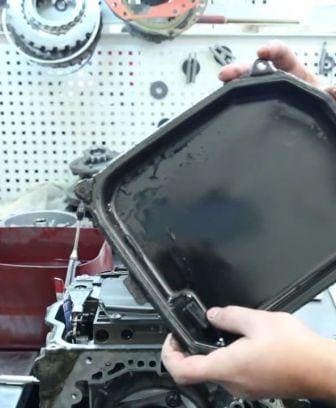
Remove the valve body pan and inspect the magnets for availability swarf (Fig. 15)
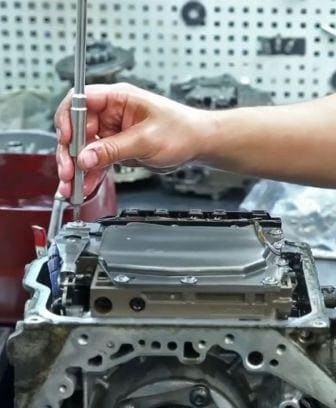
We unscrew the screws securing the hydraulic unit (Fig. 16)

Remove the valve body plate, the valve body itself (Fig. 17) and gaskets
Examine any debris found in the sump and on the magnet to determine the condition of the gearbox parts.
Clutch wear particles indicate wear on the drive plate or brake bands.
Steel particles on the magnet indicate wear on the bearings, gears, or drive plate.
The presence of aluminum particles indicates wear on the bushings or gearbox housing.
If there is a large amount of foreign matter and particles, replace the torque converter and carefully check the condition of the gearbox parts.
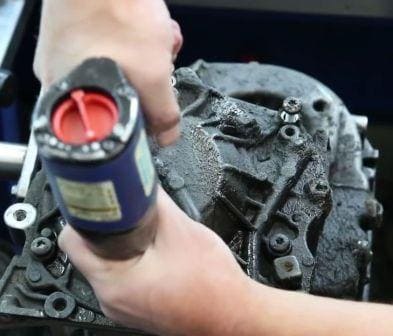
Unscrew the rear cover of the gearbox (Fig. 18)
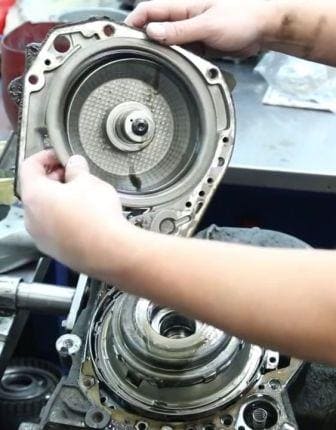
Remove the fourth gear piston (Fig. 19)
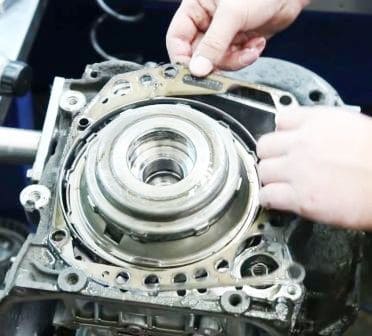
Remove the rear cover gasket (Fig. 20)
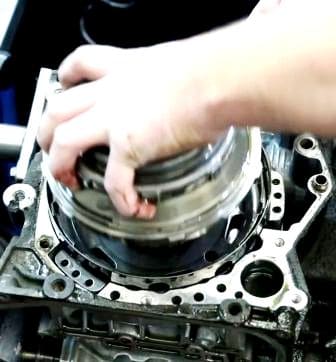
Remove the input shaft (Fig. 21)
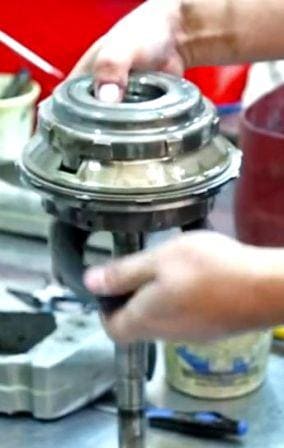
We take out the package of clutches of the second, third and fourth gears (Fig. 22)

We remove the small sun gear and one-way clutch (hap) (Fig. 23)

We take out the package of clutches of the fourth gear (Fig. 24)
Helpful tips:
If the drive plate or brake band is replaced with new ones, soak the new part in automatic transmission fluid for at least two hours before installing.
Lubricate all oil o-rings, rotating parts, o-rings and moving parts with automatic transmission fluid before assembly.
All O-rings, oil seals and gaskets must be replaced with new ones.
When reassembling, use petroleum jelly, but do not lubricate with grease.
When a bushing needs to be replaced, replace the part (assembly) containing the same bushing.
After applying sealant, assemble within 10 minutes and leave for 30 minutes before filling with automatic transmission fluid.
Next we need to remove the reverse gear servo piston.
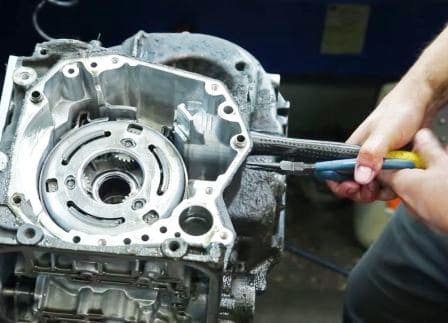
To do this, we rest against the servo piston with the wooden handle of the hammer and compress the retaining ring with tongs (Fig. 25)
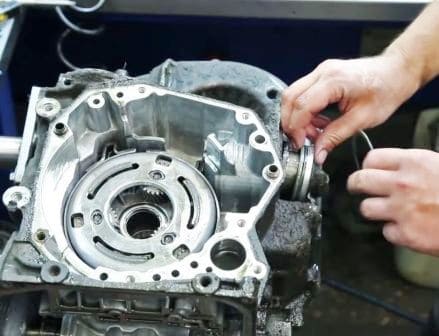
Remove the servo piston from the gearbox housing (Fig. 26)
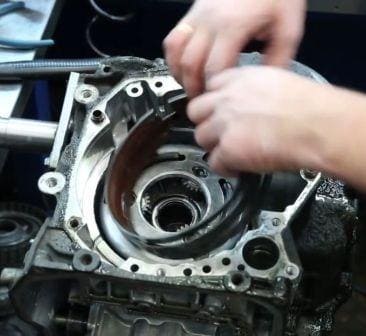
Remove the reverse gear brake band (Fig. 27)
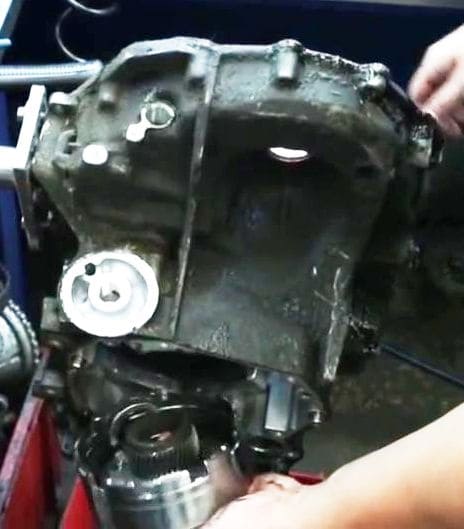
We take out the drum with the planetary block (Fig. 28)
After that, all parts are washed and defective.
The assembly of the gearbox will be discussed in the next article.








